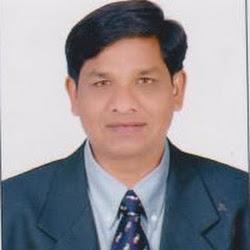Corporate Governance articles list
The main problems at assessment of qualitative and quantitative indices of state activity
The article analyzes the main problems of making an assessment of public administration activities, gives important question and makes main ways of experiences of assessing criteria of public administration. This the article is also devoted to the analysis of the essence of efficiency and quality of public administration in the world and studies the main conceptual models of efficiency of public administration, the definition of types of efficiency and identification of the main problems when forming criteria for evaluation of efficiency and quality of the government
A comparative study of social and economic aspect of migration
India is a country of immense diversity. It is home to people of many different racial, languages, ethnic, religious, and national backgrounds. Groups of people in India differ from each other not only in physical or demographic characteristics but also in distinctive patterns of behavior and these patterns are determined by social and cultural factors like language, region, religion, and caste. Apart from behaviour, economic development, level of education and political culture of the people in various social segments differ from region to region. More you can say that economy and cultures have been enriched by the contributions of migrants from round the globe. In an increasingly globalised world, migratory movements is continuously shaping the countries all over the world. Some countries like India and Ireland, which set the example of economic development and social integration, have the positive impact of the migration by globalisation and some countries like USA, which recently witness racism, xenophobia and discrimination have the negative impact on the migrants. It does not mean India do not face fragmentation and USA do not have cohesion. USA have many stories which show successful integration process, that facilitated the lives of immigrant communities, but being a developed country it still suffers from cultural alienation. In these countries, borders are built within borders to create cultural divides that do not allow people to integrate. Recently, this problem has become more prominent due to the rise of terrorism, clash of cultures in the world, leading to the glorification of stereotypes. People are becoming less accepting towards anyone who does not belong to their region. Migration does not stop after people move from one place to another place. The main question start after that ‘now what’ they will do. That is why this topic needs to be discussed thoroughly in order to find better solutions. This paper will begin with an analysis of different approaches to Migration, discuss the target groups for integration policies, provide indicators of the current situation of migrants and proceed to an analysis of integration tools: legislation, social policies and participatory processes. It will focus not only on the impact of migration but also on social integration, mix culture like indo-western culture in a comparative basis.
A comparative study of social and economic aspect of migration
India is a country of immense diversity. It is home to people of many different racial, languages, ethnic, religious, and national backgrounds. Groups of people in India differ from each other not only in physical or demographic characteristics but also in distinctive patterns of behavior and these patterns are determined by social and cultural factors like language, region, religion, and caste. Apart from behaviour, economic development, level of education and political culture of the people in various social segments differ from region to region. More you can say that economy and cultures have been enriched by the contributions of migrants from round the globe. In an increasingly globalised world, migratory movements is continuously shaping the countries all over the world. Some countries like India and Ireland, which set the example of economic development and social integration, have the positive impact of the migration by globalisation and some countries like USA, which recently witness racism, xenophobia and discrimination have the negative impact on the migrants. It does not mean India do not face fragmentation and USA do not have cohesion. USA have many stories which show successful integration process, that facilitated the lives of immigrant communities, but being a developed country it still suffers from cultural alienation. In these countries, borders are built within borders to create cultural divides that do not allow people to integrate. Recently, this problem has become more prominent due to the rise of terrorism, clash of cultures in the world, leading to the glorification of stereotypes. People are becoming less accepting towards anyone who does not belong to their region. Migration does not stop after people move from one place to another place. The main question start after that ‘now what’ they will do. That is why this topic needs to be discussed thoroughly in order to find better solutions. This paper will begin with an analysis of different approaches to Migration, discuss the target groups for integration policies, provide indicators of the current situation of migrants and proceed to an analysis of integration tools: legislation, social policies and participatory processes. It will focus not only on the impact of migration but also on social integration, mix culture like indo-western culture in a comparative basis.
Study of temperature variation in human peripheral region during wound healing process due to plastic surgery
In this paper, investigations are made to analyze the human body temperature during wound healing process due to surgery. Wound is considered after the skin graft. Skin graft is a technique used in plastic surgery. Skin is the first line of defense between the human and environment, it is very susceptible to damage. Internal body or core temperature (Tb) is one of the clinical vital signs along with pulse and respiratory rates. Any disturbance in body temperature will drive complexities in wound healing process. These studies are important in the mechanism of establishing the limits of thermal regulation of human body during the healing process in different situations and conditions. The Finite element method is used to analyze tissues temperature for normal tissues (donor site) and abnormal tissues (tissues after surgery). Appropriate boundary conditions have been framed. Numerical results are obtained using Crank Nicolson Method.
Metapuf: a challenge response pair generator
Physically unclonable function (PUF) is a hardware security module preferred for hardware feature based random number and secret key generation. Security of a cryptographic system relies on the quality of the challenge-response pair, it is necessary that the key generation mechanism must unpredictable and its response should constant under different operating condition. Metastable state in CMOS latch is undesirable since it response becomes unpredictable, this feature used in this work to generate a unique response. A feedback mechanism is developed which forces the latch into the metastable region; after metastable state, latch settle to high or state depends on circuit internal condition and noise which cannot be predicted. Obtained inter hamming variation for 8 PUF is 51% and average intra hamming distance is 99.76% with supply voltage variation and 96.22% with temperature variation.
Intersection of caste and gender based subjugation
One of the unique features of Indian society is prevalence of caste system which was originated thousands of years back to demarcate the people engaged in different occupation or jobs. Initially it was not much rigid but gradually people belonging to upper castes for their own selfish means to maintain their monopoly made this arrangement hereditary and started treating people of lower castes disgracefully. For preservation of this system, people started controlling their women to prevent inter-caste marriages and the concept of endogamy came up. This robbed away many types of freedom from women. For women belonging to lower castes, this situation is worse as they are doubly subjugated on the basis on caste as well as gender. Men belonging to their own caste treat them as secondary beings. This paper throws light on this intersection. How intersection of these two kinds of inequalities place them at the lowest position in Indian society. Dr. B.R. Ambedkar rises as their leader who all his life worked for empowerment of downtrodden section of society. He argues that education is the primary tool for evading these differences among people. He further emphasizes to adopt the concept of exogamy to break the backbone of Indian caste system and to immediately leave a religion or culture which legitimizes such system of inequality among people of the same land.
Intersection of caste and gender based subjugation
One of the unique features of Indian society is prevalence of caste system which was originated thousands of years back to demarcate the people engaged in different occupation or jobs. Initially it was not much rigid but gradually people belonging to upper castes for their own selfish means to maintain their monopoly made this arrangement hereditary and started treating people of lower castes disgracefully. For preservation of this system, people started controlling their women to prevent inter-caste marriages and the concept of endogamy came up. This robbed away many types of freedom from women. For women belonging to lower castes, this situation is worse as they are doubly subjugated on the basis on caste as well as gender. Men belonging to their own caste treat them as secondary beings. This paper throws light on this intersection. How intersection of these two kinds of inequalities place them at the lowest position in Indian society. Dr. B.R. Ambedkar rises as their leader who all his life worked for empowerment of downtrodden section of society. He argues that education is the primary tool for evading these differences among people. He further emphasizes to adopt the concept of exogamy to break the backbone of Indian caste system and to immediately leave a religion or culture which legitimizes such system of inequality among people of the same land.
Implementation of corporate social responsibility initiatives for tanzania corporations and not-for-profit organizations
The purpose of this study is to evaluate activities of the corporate citizens in Tanzania and find the best way of aligning CSR initiatives to attain mutual benefits between the organizations and general public. A total of 45 organizations, both for profit and not for profit, were engaged in this study from four different industries. The study used semi-structured interview guide to collect data and a focused group discussion was organized. Contents analysis was used to categorize the responses into five major themes, as discussed in the main document. The findings reveal that CSR is still at its initial stage and much has to be done for the corporations to draw the best out it. Keywords Strategic CSR Value Organization and Society
Effect of transformational leadership style to job satisfaction at pt musim mas, medan
There are more and more multinational enterprises growing in Indonesia that makes foreign employees are increasing every year. Thus, it is important for local workers to understand the leadership style of expatriates from the companies’ leaders and managers. The purpose of this research is to see the effect of transformational leadership style on job satisfaction conducted at PT Musim Mas, Medan. This research uses quantitative method with simple random sampling of 36 employees working in the company. The test results show that transformational leadership style has a positive significant effect on job satisfaction at PT Musim Mas, Medan as much as 69.5%.
The effect of transformational leadership and competence on employee performance with job satisfaction as intervening variable
This study aims to see and determine the effect of transformational leadership and competence of PT Waruna Shipyard Indonesia on employee performance through job satisfaction as intervening variable. This research was conducted at PT. Waruna Shipyard Indonesia, located on Bagan Deli Street, Medan Belawan District, North Sumatra. This research was conducted of the month of August 2019-January 2020. The data analysis tool by structural equation modeling (SEM) with smartpls program. The population is employees at PT. Waruna Shipyard Indonesia in 2019, namely as many as 134 employees. This study used slovin formula for the sampling, calculations sample were respondents is 100 permanent employees of PT. Waruna Shipyard Indonesia. Thus taken 30 respondents outside of the sample to validity and reliability test instrument for testing questionnaires. Based on structural equation modeling (SEM) analysis, transformational leadership and competence have positive and significant effect on employee performance with job satisfaction as intervening variable at PT. Waruna Shipyard Indonesia. The contribution of transformational leadership, competence, and job satisfaction explains the employee performance variable of 0.724 or 72.40%. The remaining 0.276 or 27.60% is effect by other independent variables not examined in this study.
Exploring the big data and cloud computing management in e-government services: a qualitative case study in terengganu public sector
The emergence of big data has caused various challenges to data management lifecycle including storage, processing, sharing, and applications. During the same time frame, the fast development in cloud computing provides increased efficiency in computing support that address these challenges. However, there are issues in big data and cloud computing management which include security concerns, data fragmented, and distrust in using clouds that could become the roadblock to e-government services success. Although ensuring data management has been the responsibility of providers in the public sector, this issue seems to be unavoidable. In such circumstances, initiatives from the public sector agencies are crucial to ensure data is effectively managed. This research in progress aims to investigate how the public sector agencies in Terengganu manage data to improve the e-government performance. The research uses the interpretive research paradigm and adopts the qualitative research methodology using a case study design. A single case of a public sector which utilizes big data and cloud computing within the e-government platform is selected as the case for this research. The findings of this research are expected to be used in developing a framework of big data and cloud computing management which will assist in providing reliable and accurate information to citizens within the e-government environment.
A study on corporate social responsibility – a case study with reliance industries
Corporate social responsibility (CSR) is a self-regulating business model that helps a company be socially accountable—to itself, its stakeholders, and the public. Reliance Foundation (RF) is a not-for-profit organization established by RIL to bring about changes in Indian society seamlessly. CSR is for the community, it is equally valuable for a company. CSR activities can help forge a stronger bond between employees and corporations, boost morale and help both employees and employers feel more connected with the world.
Project failure and stakeholders reaction: a conceptual study
Effective project management requires an understanding of how stakeholders are impacted by project failure. It draws attention to the effects on those involve finances, reputations, and emotions, assisting organizations in risk avoidance and fostering stakeholder satisfaction, trust, and long-term success. The purpose of this study is to provide proactive risk management, stakeholder involvement, and project result strategies. In order to compile this study, we have used a number literature reviews ranging from 2004 to 2023. The study's findings show that project failure results in significant financial losses, harms reputation, has legal ramifications, affects employee wellbeing, stifles relationships with stakeholders, stifles innovation, and endangers communities and the environment. By Adopting proactive risk management, strong governance, open communication, employee support, stakeholder involvement, strategic resource allocation, and social and environmental responsibility to reduce these negative effects and achieve sustainable project outcomes. The policymakers, practitioners and academia should focus risk factors those are associated with the project failure and hance manage a good harmony among the stakeholders.
Digital governance initiatives in telangana: a comprehensive overview
Digital governance has become a cornerstone of modern administrative systems, enabling governments to provide efficient and transparent services to citizens. Telangana, a state in southern India, has emerged as a pioneer in implementing various digital governance initiatives to enhance service delivery and promote inclusive development. This paper provides a comprehensive overview of the digital governance initiatives undertaken by the Government of Telangana, highlighting their objectives, key features, and impact on governance. The paper begins by outlining the context of digital governance in Telangana, emphasizing the state government's commitment to leveraging technology for governance reforms. It then delves into specific initiatives across various sectors, including e-governance, digital infrastructure, citizen services, and smart city projects. Each initiative is analyzed in terms of its objectives, implementation strategies, technological components, and outcomes. Key initiatives such as the Telangana State Portal, T App Folio mobile app, MeeSeva portal for e-services, and the T-Fiber project for broadband connectivity are discussed in detail. Additionally, the paper examines the integration of emerging technologies like artificial intelligence, blockchain, and Internet of Things (IoT) in governance processes to improve efficiency and transparency. Furthermore, the paper evaluates the impact of these initiatives on governance outcomes, including enhanced service delivery, increased transparency, and improved citizen engagement. It also identifies challenges faced in the implementation process and offers recommendations for overcoming them. Overall, this paper provides valuable insights into the digital governance landscape in Telangana, showcasing the state's efforts in harnessing technology to build a more efficient, responsive, and citizen-centric administration. By documenting the successes, challenges, and lessons learned, it aims to inform policymakers, researchers, and practitioners interested in digital governance and public administration reform.
Most Popular Category
- Pharmacy (258)
- Education and social science (216)
- Pharmacology (211)
- Pharmacognosy (173)
- Business management (147)
- Pharmacology and toxicology (132)
- Education and training (126)
- Pharmaceutical sciences (126)
- Research (121)
- Medicine (111)
- Management (98)
- Health Science (96)
- Computer Science (87)
- Human resource management (83)
- Biological Sciences (83)
- Computer Science Applications (80)
- Engineering (77)
- Accounting and finance (73)
- Information technology (67)
- Public health (60)
 Ikboljon Odashev Mashrabjonovich
Ikboljon Odashev Mashrabjonovich 1.jpg) Ekta Meena
Ekta Meena  Lila Maria Kaban
Lila Maria Kaban  Vidya Bhat
Vidya Bhat  Dr Gedam Kamalakar
Dr Gedam Kamalakar